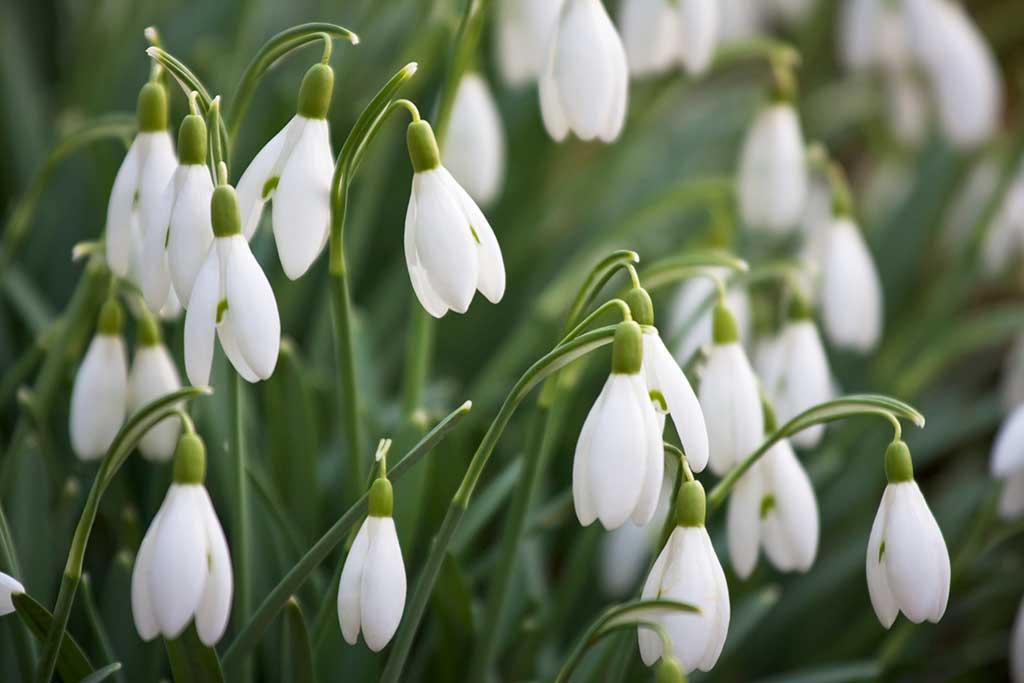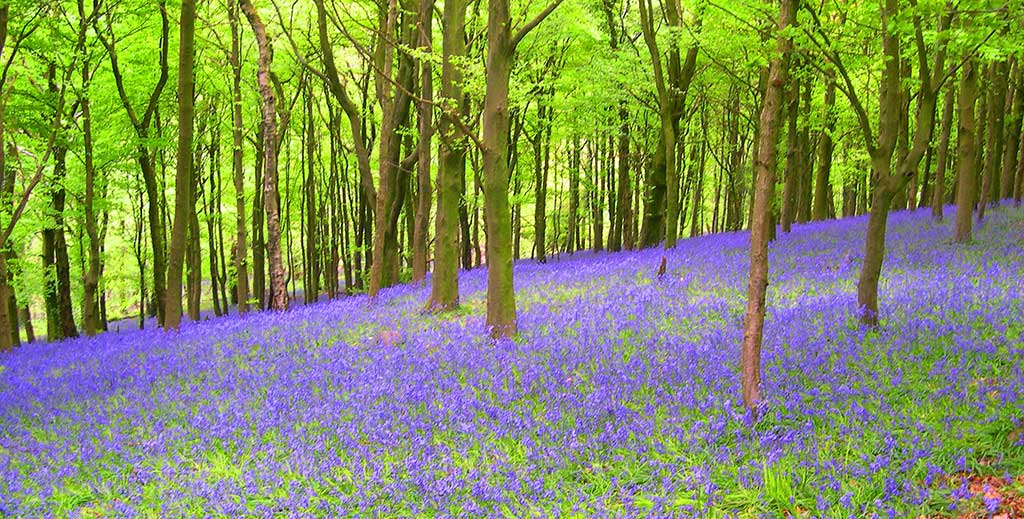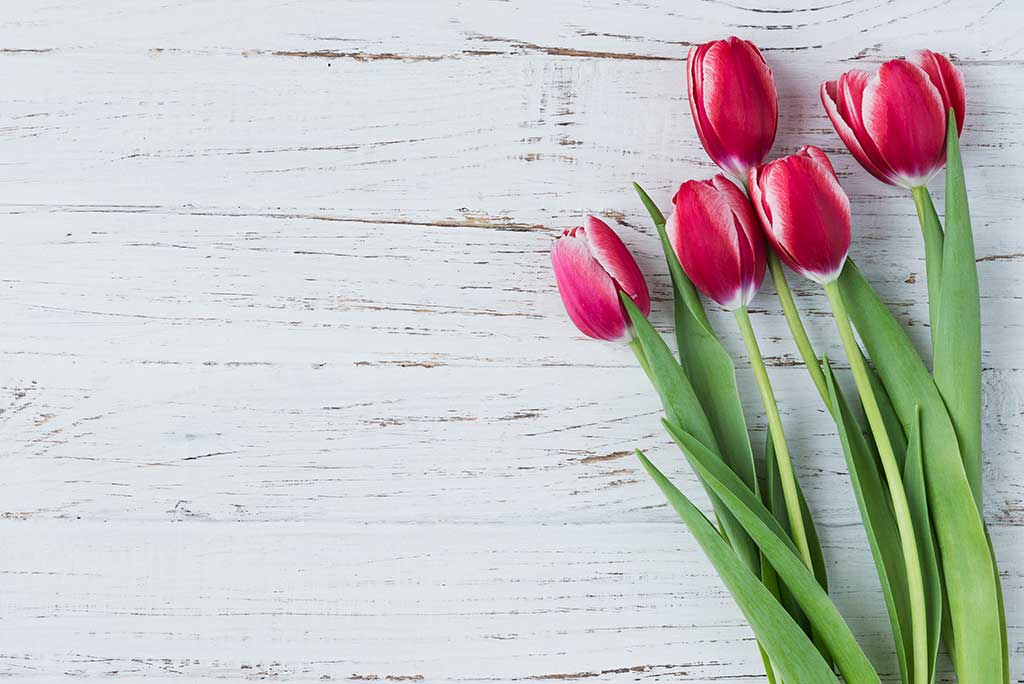March into Spring
Spring is a time of renewal, hope and a dappling of colour. But Kevin Revell reminds us that planning a spring garden starts way back in the autumn
Spring flowering bulbs are planted in autumn but those who had the foresight to invest in some will by now, be rewarded with a host of golden daffodils, or at least a pot or two of tulips if your garden is more modest.
The arrival of spring is announced to the world by a fanfare of golden trumpets of daffodils and narcissi – the only difference is one of scale; we tend to regard the large flowers of daffodils as distinct from the smaller flowers of narcissi but botanically speaking, they are one and the same. True daffodils, when they finally burst into flower are a joy to behold and really lift the spirits but it can still be quite cold when they flower; strong winds will often blow the tall flowers over, spoiling the display.
Varieties such as ‘Carlton’ and ‘Dutch Master’ are well regarded and grow to over 50cm. Wales has a particular affinity with the daffodil; it is after all, our national flower and is usually in flower for St David’s Day on 1st March. Very often, a cold spell of weather in February will delay flowering for a week or two, so it pays to have an insurance policy – pots of bulbs can be brought on early in a greenhouse or conservatory, or you could choose from a range of narcissi which naturally flower early.
The popular variety ‘Tête à Tête’ is compact in size at only 15cm and is early into flower, making it a fine choice for pots and containers. Similar varieties include ‘Jetfire’ with a bright orange trumpet and the narrow flowered ‘February Gold’. The Tenby Daffodil or Narcissus obvalaris is understandably popular in these parts and is believed to be native to Wales.

Some claim that the sight of the first snowdrop signals the arrival of spring but they are better described as the last flowers of winter and indeed are often seen peeping out through a covering blanket of snow. Crocuses likewise flower early and do nothing to encourage winter coats to be packed away for the year. Their appearance is welcome but not a true indicator of spring. Some maintain that spring can only be rung in with celebratory peals of bluebells which carpet the floor of ancient woodlands in April.
If you are lucky, they will have a vestigial presence in your garden but more often than not, these will be the introduced Spanish bluebell which out-compete and cross breed with our native flower. Cultivated British bluebells are available from garden centres as growing plants in the green now and as dry bulbs in autumn.
Early flowering bulbs are an important source of pollen and nectar for early foraging bees as they emerge from hibernation. Primroses and winter heathers will encourage them but bees are often found visiting a variety of spring bulbs. One of the best in this regard is the grape hyacinth which can become an invasive weed in open ground but is good running along the base of hedgerows. It flowers reliably when grown in pots and containers.
Most bulbs fade away and become progressively less productive over a number of years when grown in poor conditions, short of light and nutrients. Open, sunny conditions in fertile well-drained soil is ideal and a good feed with balanced fertiliser after flowering will build up the bulbs before the foliage dies back in summer. Bulbs are best left undisturbed in the soil rather than being disturbed each year and benefit from deep planting – at least twice the depth of the bulb to avoid accidentally damaging them.
By the time the tulips are out, spring is well and truly sprung. Early Darwin tulips are the traditional wineglass shape and grow tall, flowering in a range of bright colours such as yellow and red. The deep purple variety ‘Queen of the Night’ is also a tall flowering type which flowers later in early May, reaching a height of 60cm. Lily flowered tulips have a charm of their own with a narrow waist and pointed petals. The bright orange ‘Ballerina’ is a good example along with the aptly named, richly-coloured ‘Burgundy’; each can grow to 50cm. Sunny spring days will encourage tulip flowers to fully open with the petals widely reflexed, only as the sun goes down do they assume the classic tulip shape. If wind or lack of space is a problem, there are plenty of dwarf forms to choose from, including the popular ‘Red Riding Hood’ at only 20cm.

Even those with no gardens can enjoy spring flowering bulbs as some will grow perfectly well on a windowsill and will flood the house with their scent as they open. Hyacinths have long been grown in this way while a type of daffodil known as ‘Paperwhite’ is ideal for indoor cultivation. Amaryllis bulbs make a spectacular house plant – a bulb as big as a prize Spanish onion sends up a thick flowering stem up to 50cm tall. Autumn may be the traditional time to buy and plant spring flowering bulbs but if you didn’t get around to it, you could call in to your local garden centre where salvation is at hand with pot grown bulbs available to buy. These can be enjoyed in planted containers or popped into borders wherever an injection of spring colour is required.
Of course, the selection available in autumn is much greater and offers better value for money but that was then and this is now – sometimes we act on impulse, seeing such beguiling beauty in the spring sunshine. Growing bulbs is easy and the arrival of their flowers in spring is a seasonal treat that is long anticipated and will banish the winter blues for another year. The more you grow, the better the display and with careful planning, the display can be extended over many months. So go on – make an autumn date in the diary to make your investment for next spring!
Kevin Revell is the Plant Area Manager at Caerphilly Garden Centre

